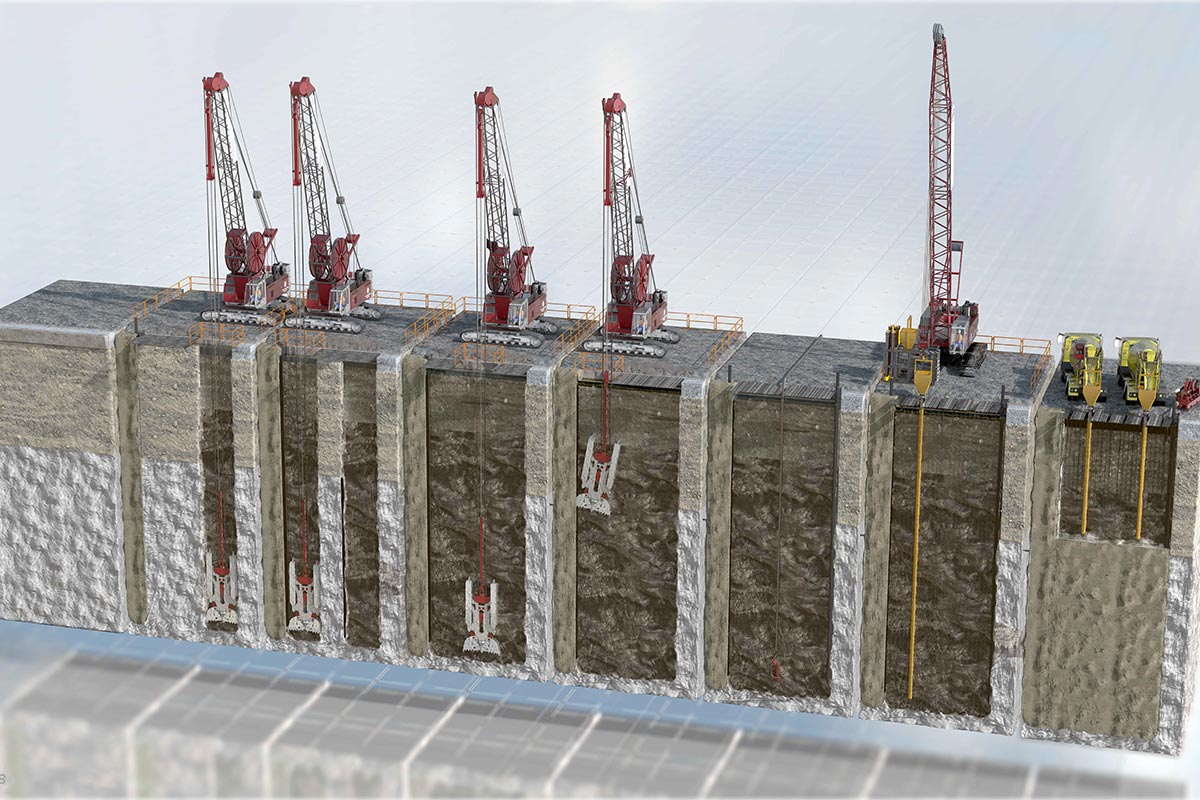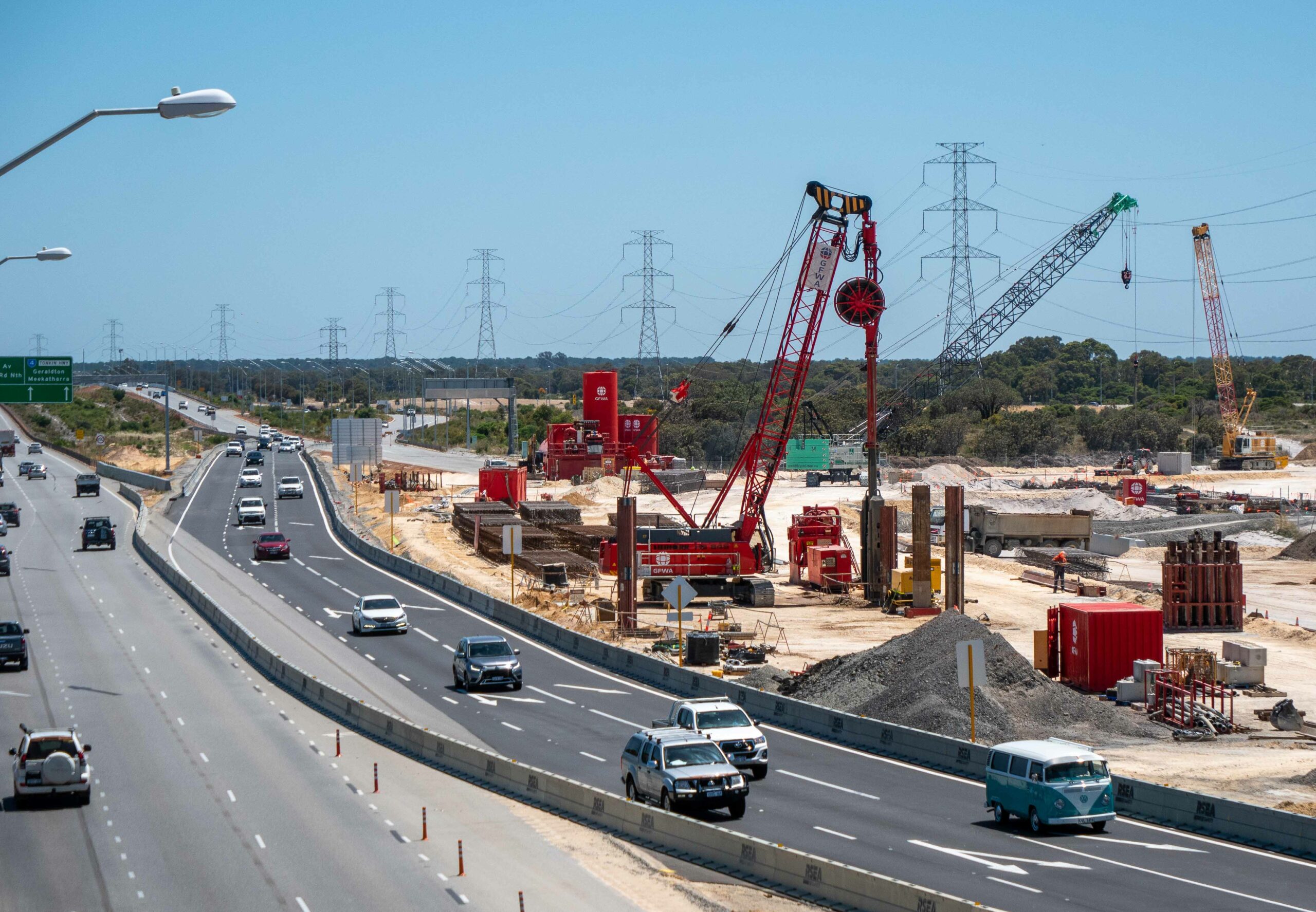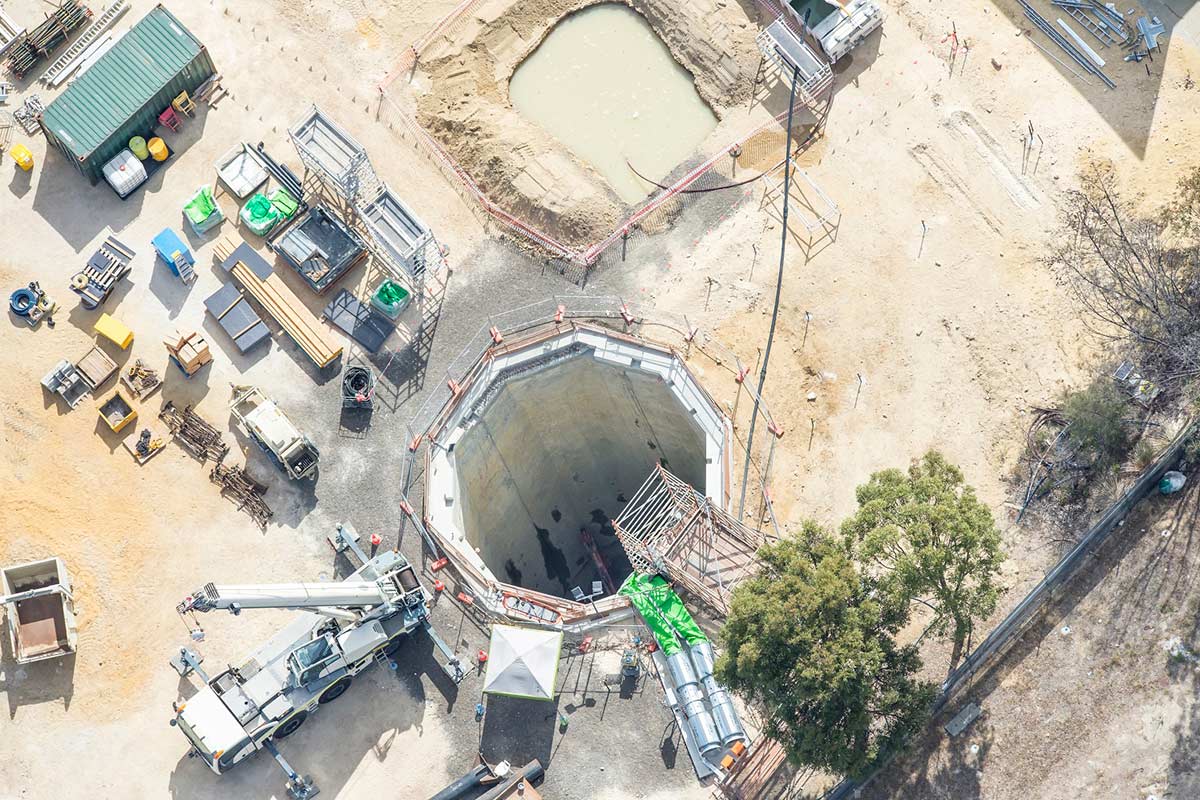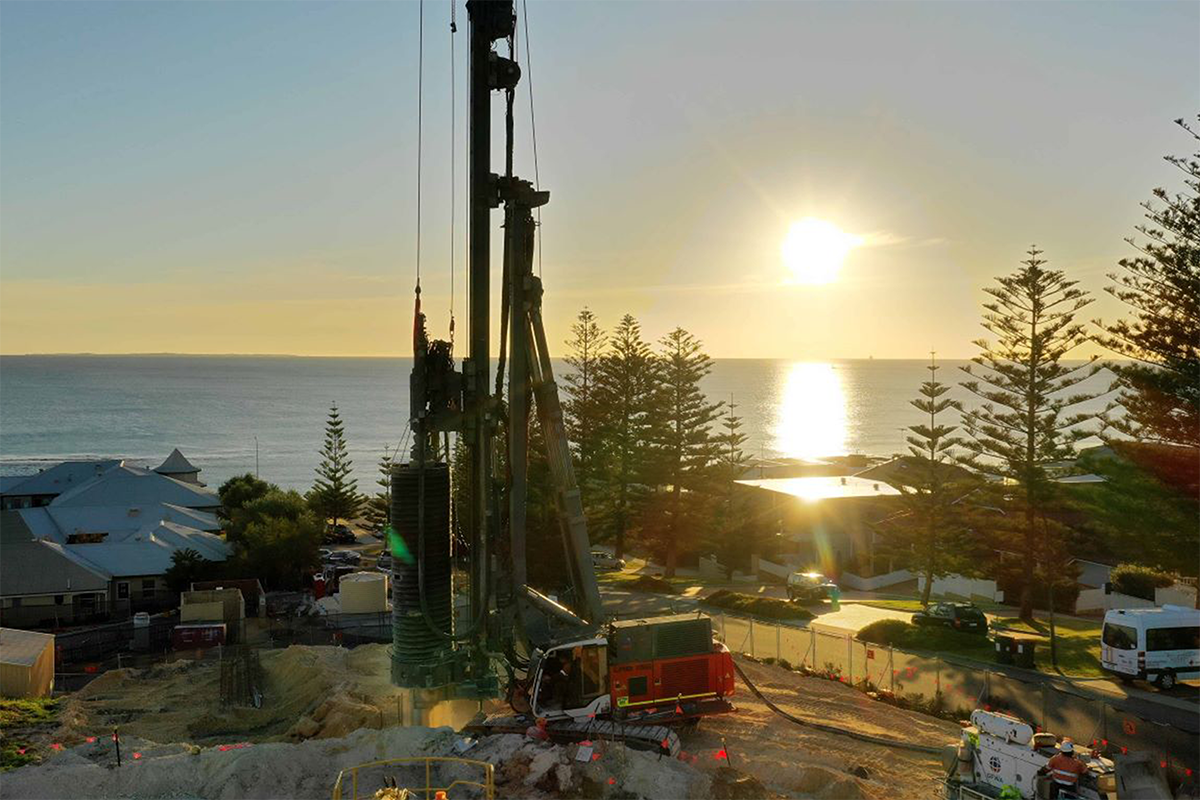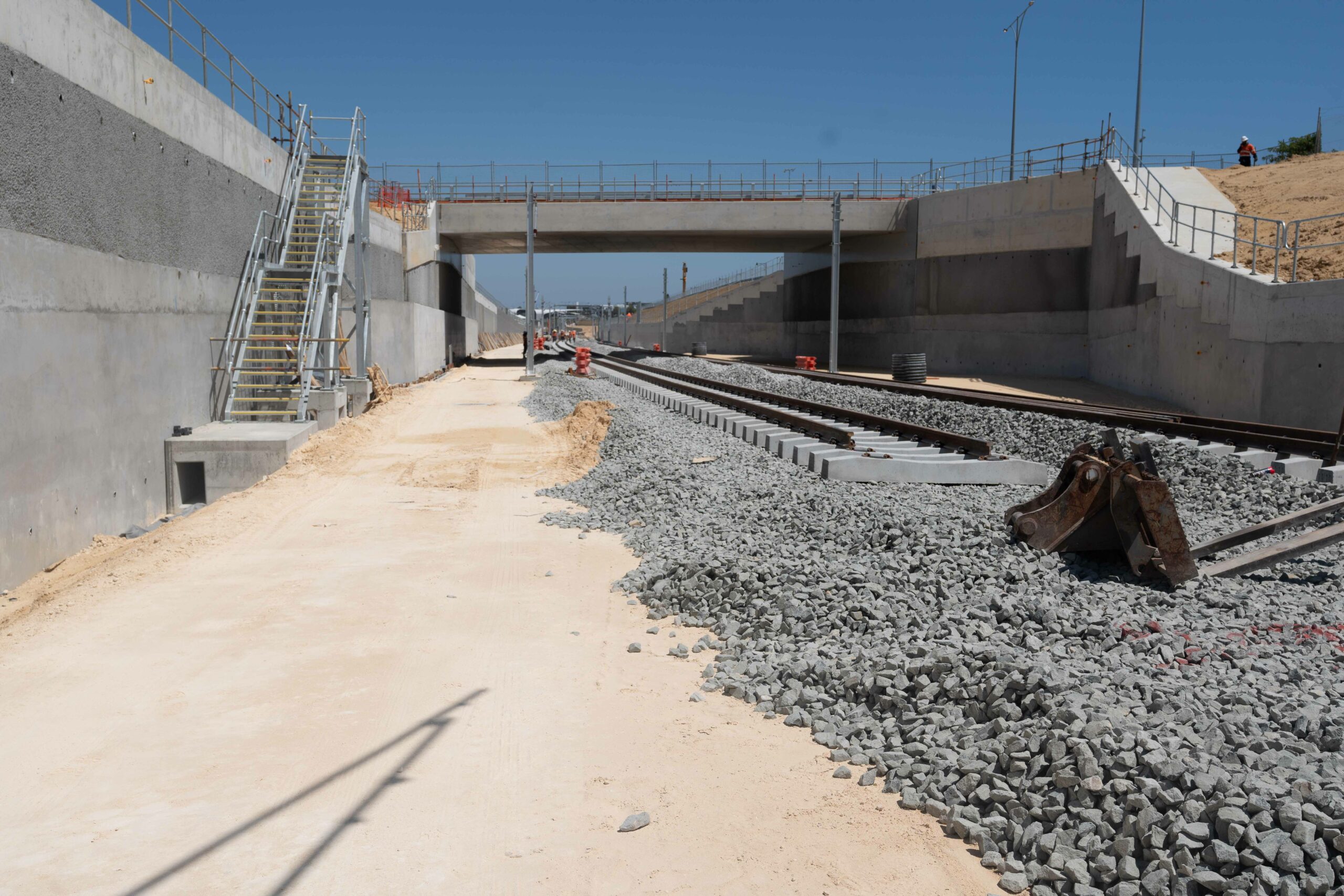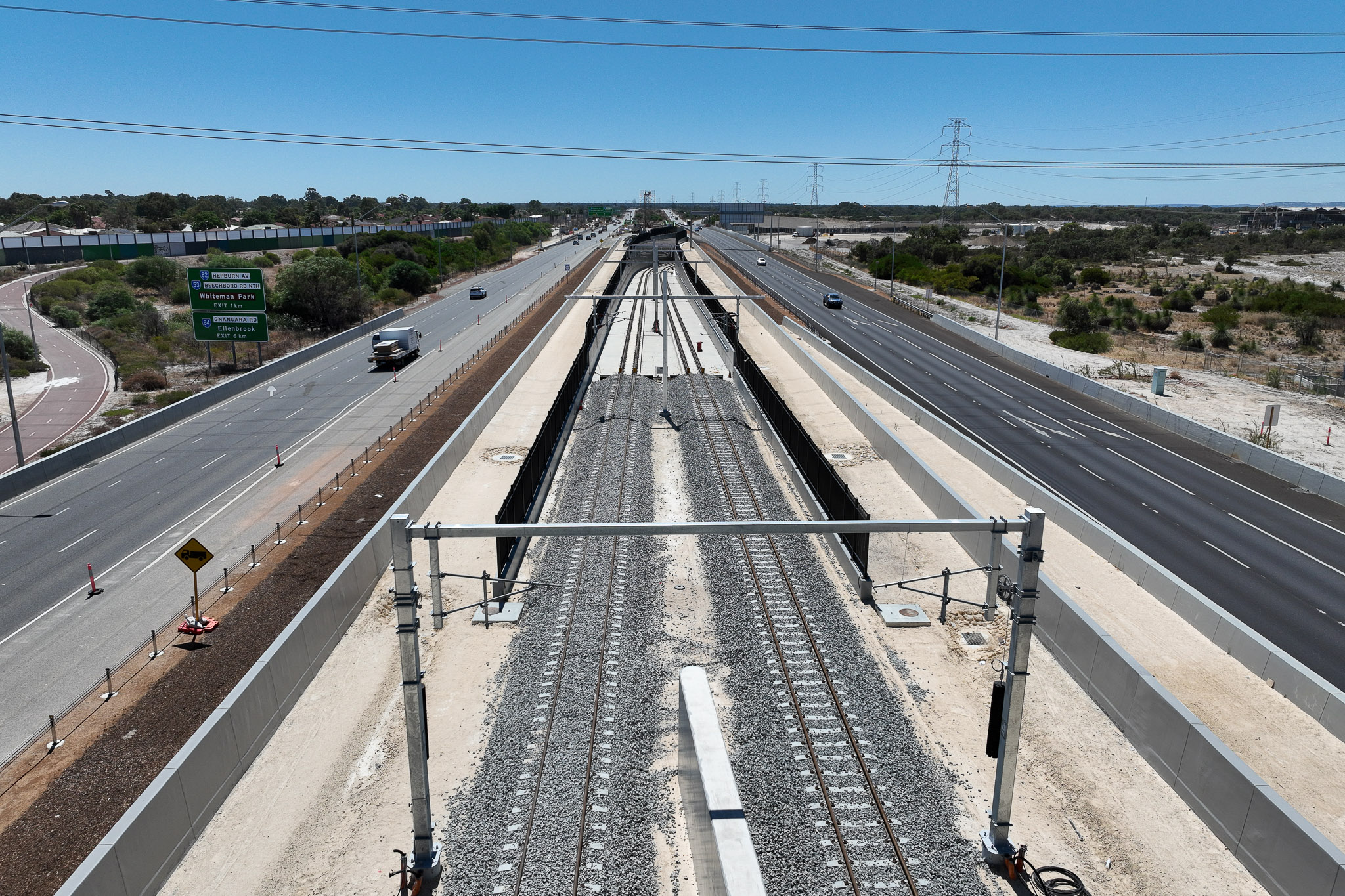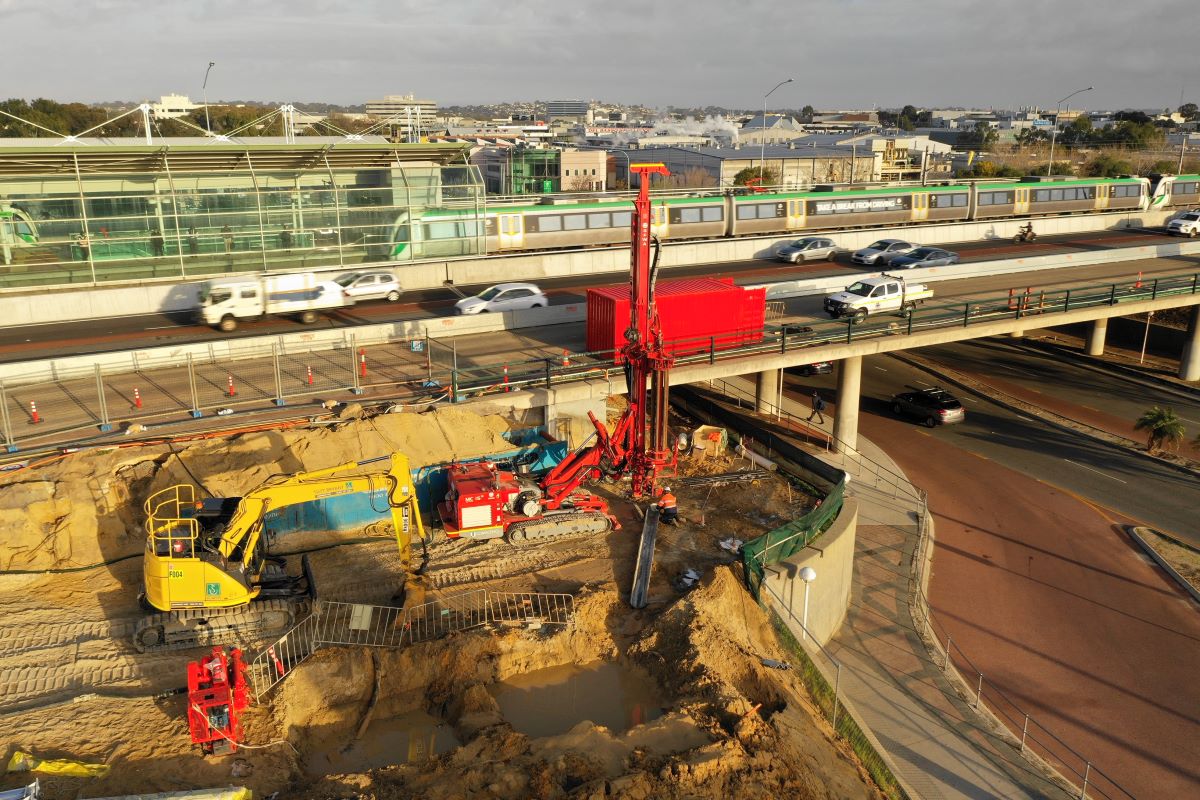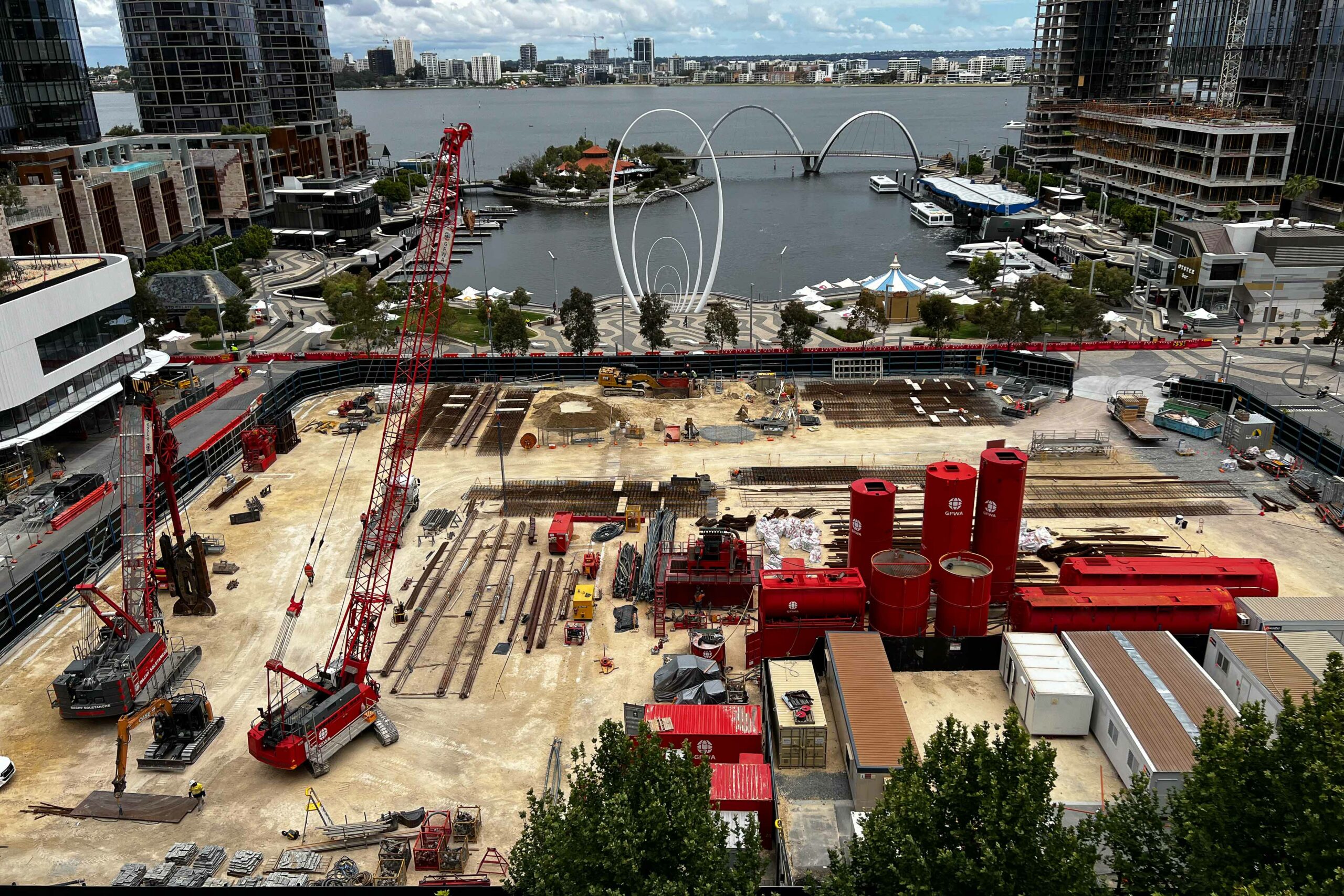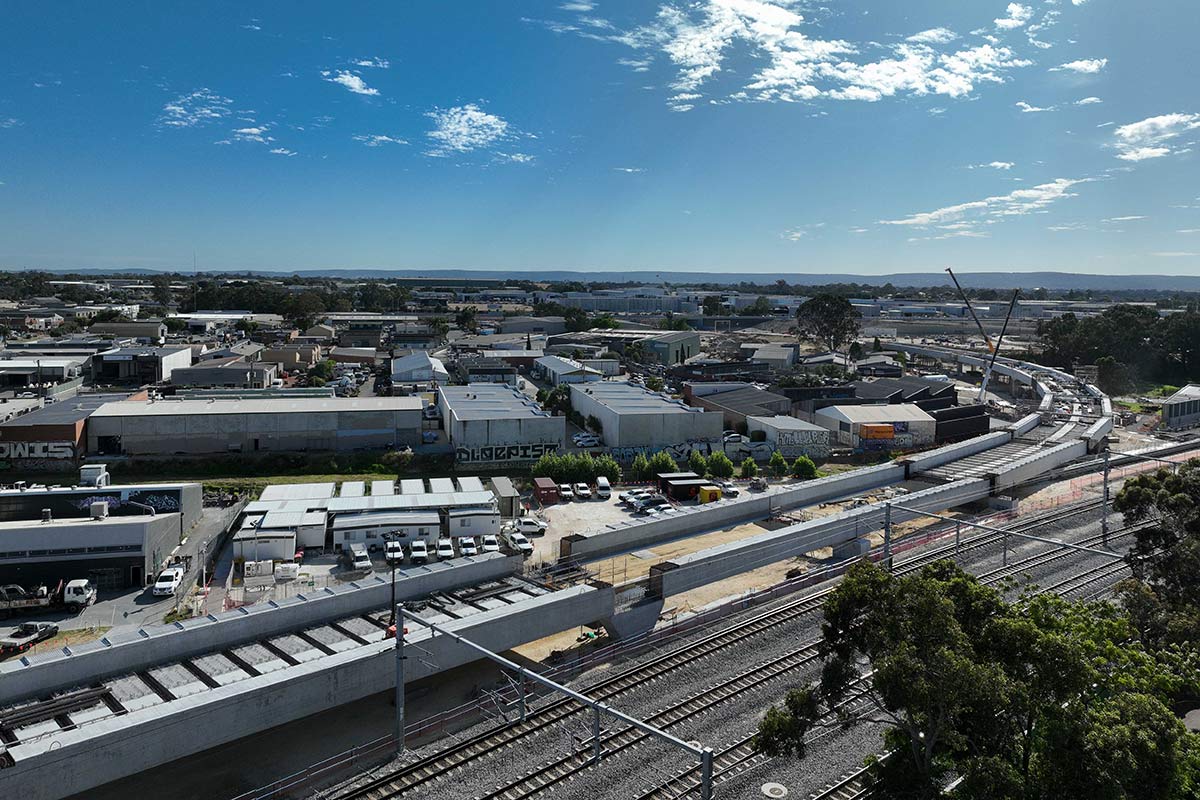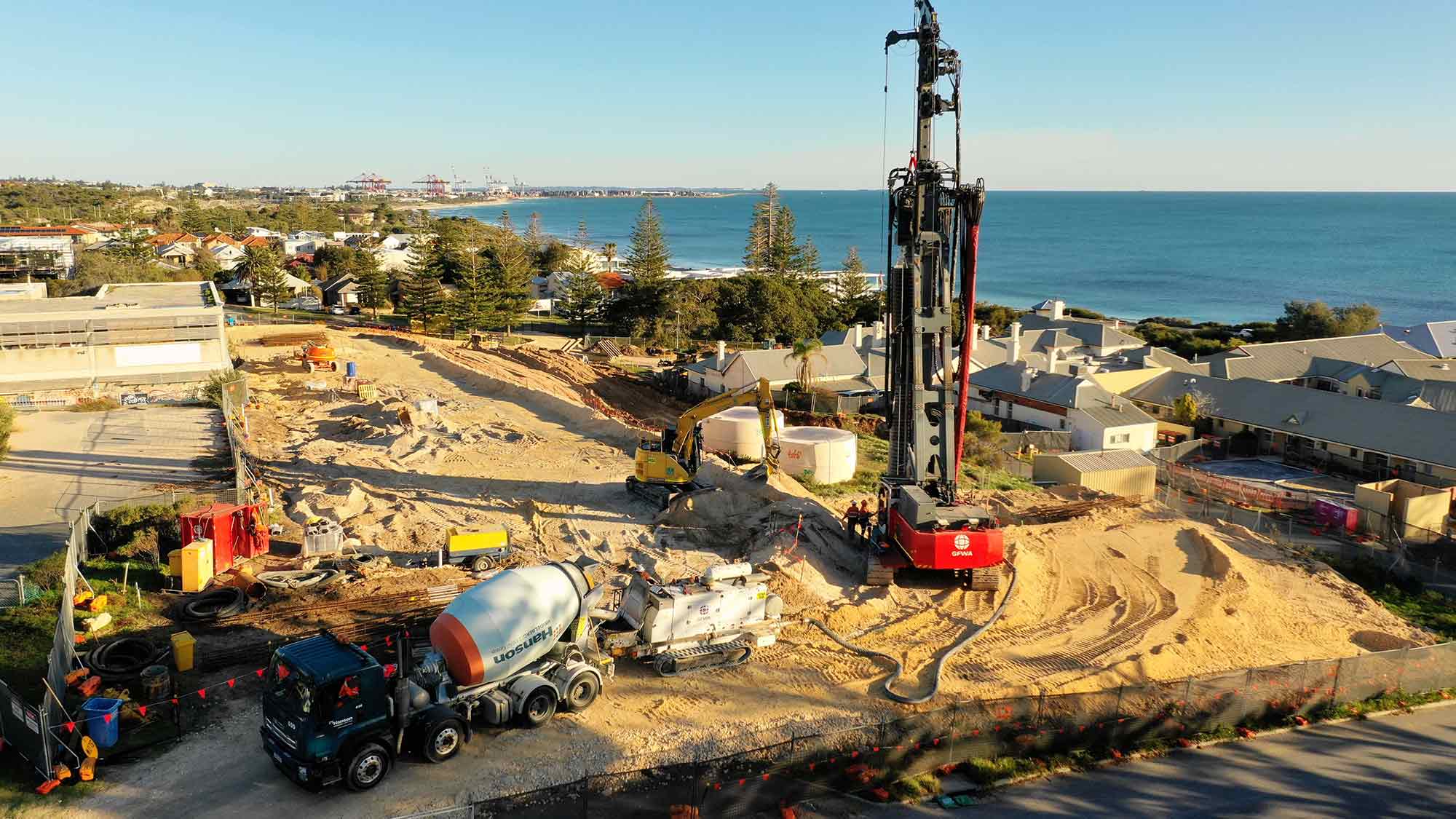Project Description
Diaphragm Wall
GFWA: Diaphragm wall pioneers in Australia. Completed projects throughout Australia.
Diaphragm Walls provide high quality, cost effective permanent ground retaining systems. These walls are excavated under slurry using grabs or reverse circulation twin cutter-wheeled hydrofraise excavation machines.
Our processes
Constructing a diaphragm wall involves a meticulously staged process designed to create a deep, structural barrier essential for supporting excavations and ensuring stability in challenging soil conditions. This technique proves highly suitable for projects demanding robust retaining walls and deep excavations, such as basements, underground parking, tunnels, and water reservoirs. Here’s a detailed, step-by-step guide to the diaphragm wall construction process:
Stage 1: Site Preparation
Before excavation begins, the site is cleared of any debris, vegetation, and existing structures that could interfere with construction activities. Guide walls are then installed along the perimeter of the diaphragm wall alignment. These guide walls act as templates to ensure the trench is accurately positioned and vertically aligned. Proper site preparation ensures a clean, organized work environment and sets the stage for precise excavation.
Stage 2: Trench Excavation
The excavation of the diaphragm wall trench is carried out using specialized equipment such as hydraulic grabs, clamshells, or cutter wheels mounted on hydraulic rigs. The depth and width of the trench typically range from several meters to over 50 meters, depending on the project requirements and soil conditions. Excavation proceeds in controlled stages, with the soil or rock material being removed and managed to ensure the trench meets the specified dimensions and shape. This careful excavation process is crucial for creating a stable foundation for the diaphragm wall.
Stage 3: Slurry Preparation and Circulation
As the trench is excavated, a bentonite slurry is continuously circulated to stabilize the trench walls. Bentonite, a type of clay mixed with water, forms a viscous slurry that exerts hydrostatic pressure on the trench walls, preventing collapse and keeping groundwater from entering the excavation. The slurry is constantly monitored and adjusted to maintain stability. This stage ensures the trench walls remain intact and safe throughout the construction process.
Stage 4: Reinforcement Cage Installation
Once the trench reaches the required depth, a steel reinforcement cage is lowered into the excavation. The cage, typically prefabricated, consists of interconnected vertical and horizontal steel bars. These bars are tied together to form a sturdy cage structure that provides the necessary tensile strength to the diaphragm wall. The installation of the reinforcement cage is a critical step in enhancing the wall’s structural integrity and ensuring it can withstand lateral earth pressures and other external forces.
Stage 5: Concrete Placement
Concrete placement is conducted using tremie pipes, which are designed to deliver concrete to the bottom of the trench without segregation. The tremie pipe is lowered into the trench, and concrete is poured through the pipe. As the pipe is slowly raised, the concrete displaces the bentonite slurry upward, ensuring the trench is completely filled with high-quality concrete from bottom to top. This method ensures the formation of a solid, continuous diaphragm wall.
Stage 6: Slurry Removal and Recycling
After the concrete has set and cured sufficiently, the excess bentonite slurry is removed from the top of the trench. The slurry is collected and can be recycled for use in other sections of the diaphragm wall or disposed of according to environmental regulations. Proper management of the bentonite slurry minimizes waste and reduces the environmental impact of the construction process, contributing to sustainable building practices.
Stage 7: Finishing and Quality Control
Once the diaphragm wall is complete, finishing touches are applied, including cleaning the exposed surface of the wall and conducting quality control inspections. These inspections ensure that the diaphragm wall meets all engineering specifications and regulatory requirements concerning dimensions, alignment, concrete strength, and impermeability. Final inspections and finishing procedures guarantee the structural integrity and long-term performance of the diaphragm wall, providing assurance of safety and reliability.
Suitability of Diaphragm Walls in the Industry
Diaphragm walls prove particularly suitable for:
- Urban Construction: They are ideal for projects in densely populated areas where space is limited, and precision is crucial. Proper alignment with existing and future structures is ensured.
- Deep Excavations: They are suitable for constructing deep basements, underground parking, and tunnels where traditional shoring methods are not feasible. Diaphragm walls enable deep excavations in confined urban spaces.
- Water Retention: They are effective in creating watertight barriers for dams, reservoirs, and water treatment plants, making them essential for water-related infrastructure projects.
- Stability in Unstable Soils: They provide crucial support in areas with high groundwater levels or unstable soils, preventing collapses and ensuring the safety of adjacent structures. This makes them suitable for various soil conditions, including soft clays, silts, sands, and even rock.
- Environmental Sustainability: The use of bentonite slurry and recycling practices reduces environmental impact and aligns with sustainable construction practices, lowering project costs and conserving resources.
Related projects

